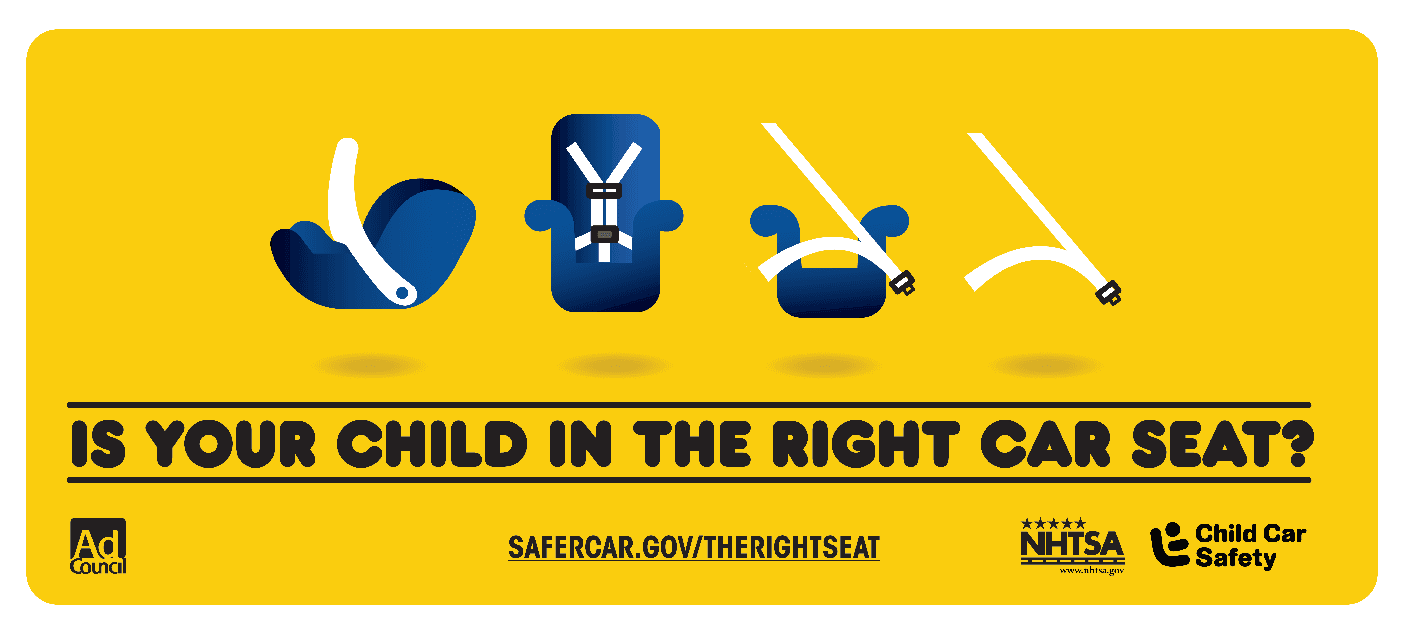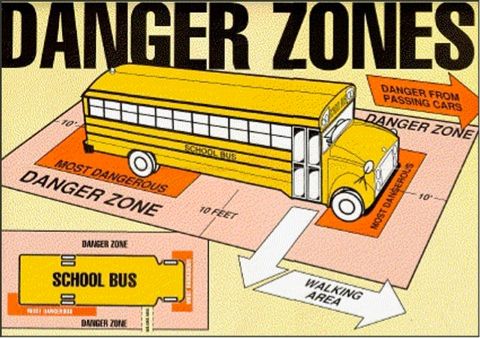TRANSPORTATION SAFETY TIPS FOR CHILD CARE CENTERS
For certain events and activities, children will need to be transported. Parents want and have every right to know as much as possible about the transportation of their children. Begin by writing a policy for parents to review and sign. The policy should be informative, inclusive, but easy for parents to understand. The policy should include information on the expectations of children and staff, emergency procedures and finally parent signature authorizing this service.
The following is detailed information for the facility--it is up to the Provider to determine how much is necessary to put in the parent policy:
Children--Car Seats: CHILDREN ALWAYS BELONG IN CAR SEATS! Not only  is this best practice, it's the law! Although each state is different and the requirements for each car seat are different it may surprise many to know that booster seats can often be used for children up to 12 years old, 80-100 lbs and close to 5 feet tall. Although it may seem a bit extreme, remember safety first!
is this best practice, it's the law! Although each state is different and the requirements for each car seat are different it may surprise many to know that booster seats can often be used for children up to 12 years old, 80-100 lbs and close to 5 feet tall. Although it may seem a bit extreme, remember safety first!
When purchasing car seats, be sure you read and follow all manufacturer’s guidelines and keep up to date on car seat recalls. It is also critical that each car seat is installed correctly. An improperly installed car seat will not protect the child. Car seats are unique to age, weight, and height of the children. As a caregiver it is your responsibility to know this information about each child you transport. This is an ongoing task that needs to be completed.
Young children grow and change rapidly, it is recommended a log or graph with weight and high be kept and updated monthly. This will ensure the most up to date information on the child and ensure they are in the correct car seat, thereby doing the most to keep them safe.
Children--Expectations while on the bus: Once again it is important to stress that CHILDREN ALWAYS BELONG IN CAR SEATS! As stated before, long commutes can be challenging. Bus aides need to be prepared. Homework is a good option, however the aide can also be prepared with songs, books, I-spy games etc., to keep the children engaged. Higher behavior expectations are reasonable for school age children but the behavior expectations need to be taught and parents need to be familiar with the policy.
Begin the school year with bus rules. As with any rules, children are more inclined to follow them if they have a part in setting them.
Suggested rules for the van:
- safety: staying seated, hands to yourself, etc.
- respect of property: no writing on the seats, no ripping tearing of seats, eating or drinking on the bus etc.
- voice level: talking/inside voices.
Once the rules have been established, consequences need to be established. If a child is seen out of his or her car seat or attempting to get out of his car seat or is using loud voices they may need to be seated next to the aide for a period of time. If the child disrespects property the back pack may need to stay up front with the driver.
The child may also need to assist with repairs; for example if the child writes on the seat, they may need to scrub off the writing. If any of these behaviors become consistent, most specifically behaviors that are unsafe, consider expelling the child from the bus for a period of time. As with any discipline, start slow and increase the discipline to fit the behavior.
Children--Expectation on school grounds: The bus cannot drop or pick up at each school at the exact time school starts and ends, so once again children need to be taught appropriate behavior while waiting. Best practice will be having an aide with the children; however, it is unrealistic to think that there will be an aide at every school to meet the children the minute they get out of school. Therefore children need to be taught where to meet their peers, the bus, etc.
Give the children ideas and ask for their suggestions for what they are allowed to do while waiting. Along with the expectation, consequences need to be established. What happens when they are not there to meet the bus? What happens if they choose to leave school grounds? What happens if there is vandalism of school property?
Children--Expectations boarding and de-boarding the bus: No assumption should be made that children understand safety when getting on or off the bus. When boarding the bus children should be taught to go immediately to their assigned seat. If their place in the bus changes regularly then it is the aide or driver’s responsibility to tell the child where to sit. Once told the child should immediately go to their seat and get buckled in, with or without the help of an adult.
If multiple children are getting on at one stop, they need to learn patience, waiting for each child to move down the aisle and get into their seats. There is also the chance that one child need to move around or over another child in order to get to their seat. Each child needs to be respectful of the other person's body as they move over and around them.
The goal is that all boarding and de-boarding will completed on the side of the street of the school; however, this may not always be the case. Therefore as children get off  the bus, street safety needs to be considered. Stop, look and listen is the best way start.
the bus, street safety needs to be considered. Stop, look and listen is the best way start.
It is the most basic but most comprehensive way to teach the children how to be safe when around cars. Stop, look and listen is as important getting on the bus as it is getting off. Since there is no guarantee that children can be dropped off and picked up where they don't need to cross traffic, it is important to teach them about cross walks, cross walk signals, crossing guards, etc.
Teaching them the basics may prevent terrible accidents. Best practice would be having an aide to cross the street with the children; however, even then the children need to understand the rules. The aide is caring for multiple children, therefore if the children are aware and understand the rules--there is less chance for injury.
Children should also be aware of danger zones around the bus. For example they need to be taught not to stand behind or around the bus. They should always be able to be seen in the side mirrors by the driver.
No matter what type of safety rules are being covered, it should begin in the classroom. Teachers can begin by having transportation lessons regularly in order to assure that children are consistently reminded of safety but also to assure that new children that enroll in the program receive information as well.
Once children have had an opportunity to discuss and practice safety rules in the classroom transportation staff should practice with the children on the bus. This too should be a consistent part of the curriculum. Remember consistency with children is key.
When completing this part of the policy be as brief, yet as specific as possible about the children's expectations as well as their consequences. If it is chosen to expel the child from the bus for a period of time, be sure you have documentation of the reasons that lead up to this to share with parents. It also needs to be determined if parent's are still going to need to pay for the period of the time the child has been removed from the bus.
To learn more safety in a child care program, try our online child care classes: